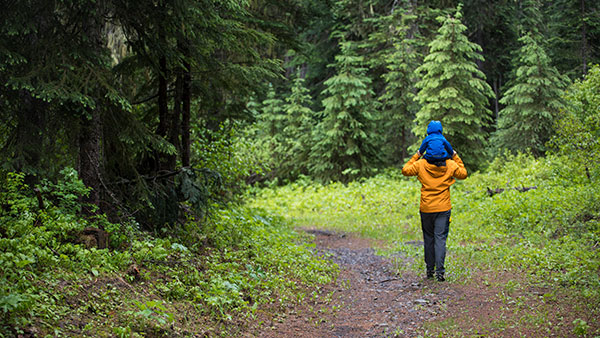For many families lockdown has been stressful but it has also provided parents with an opportunity to spend more time with their children. Suzette Shahmoon FRSA explores the lessons we might want to learn for the future.
You know that moment when you are scrolling through Facebook and you come across a post that captures your interest? You are happy, at peace, your mind is at rest and then your child walks in and starts speaking. You love your child and you want to be there for them but in that moment, you love your phone a little bit more. You’re torn; you want to do the right thing, be the best parent but also, you want them to leave you alone so you can scroll.
We all do it. I cannot be the only parent who has deemed looking at LinkedIn more interesting than listening to my daughter’s woes. Don’t get me wrong, I am pretty skilled at multi-tasking. I know how to listen for the last three words of each sentence so that I can repeat them back to her to make her think she has my attention while I am scrolling through Instagram.
At least that was my life until the Covid-19 pandemic occurred and then all of a sudden life slowed down. During lockdown, parents, across the UK, started sitting down three times a day and having meals with their children. Once a day they were going out for walks and bike rides. They were playing ball games in the parks. As a therapist I can’t help but wonder how did that impact on these children? What will be the long-term implications of us spending prolonged periods of time with our children?
Did you know that you can predict how well adjusted a child will be based on the amount of time a parent spends looking at their baby in the first few months since birth? Babies start to gaze at their parent or primary caregivers when they are only four weeks old. The more time a parent or caregiver spends gazing back and responding to their child the more securely attached the child tends to be. Reduced gaze in babies correlates with what is known as callous, unemotional behaviour; a precursor for adult psychopathy.
In the last few years I have had a multitude of young adults, ranging between the ages of 12-19 come to see me for issues related to low self-esteem, anxiety and depression. Over and over again I would hear the same words repeated in my therapy room. ‘I feel invisible’. ‘No one really sees me’. Sadly, these young adults do not only feel unseen at school or with their peers, they are also feeling this way at home. I had a 13-year-old client recently tell me that their mother only ever gives them orders: “Do your homework! Go shower! She always has time to speak to her friends on the phone, but when I want to talk, she’s too busy. I feel irrelevant. I don’t even think she knows who I am.” How does this happen? In a world governed by selfies and personal profiles how is it that our children are growing up feeling less visible than ever before?
Data is emerging showing the correlation between social media usage and teenage anxiety, depression and suicide. There is no doubt, how our kids use social media can affect how they feel about themselves, but the amount of time we spend on our phones and devices can also have an impact on our children’s wellbeing.
Our phones and devices have become our temples of instant gratification. Whatever we need, be it information, shopping or contact with others, our devices will provide in a moment. This means parents are spending more time staring at their devices and as a consequence, less time looking at their children. Most parents are guilty of this. I know I am. Those of us who have young children will be familiar with the concept of scrolling through social media or checking emails while sitting in a coffee shop while your child gnaws on a sippy cup or a croissant. I have seen parents dragging their children to school while staring at or speaking on their phones.
Up until March this year I believe we were spending less and less time looking at our children, but very little attention has been paid to the effect reduced eye gaze has on older children. More attention needs to be given to this issue in a world that has changed rapidly when it comes to competition for our attention.
Two months into lockdown, I checked in with a few of my teenage clients and the loneliness pandemic that had been gaining speed over the past decade seemed to have slowed. Children were reporting back that they are feeling less anxious and more connected to their parents and siblings than ever. Yes, there have been more arguments for some but most prefer arguments to the torture of being ignored. Being at home together meant that families were dining together and many children were receiving more face-to-face time than ever before. I write this after my walk; the green parks and the wooded areas were packed with parents talking and playing with their children without a mobile phone in sight.
As a researcher in wellbeing, I know the dangers of making statements without the data to back up my claims. However, as a therapist, I have enough anecdotal evidence compelling me to say that people – and in particular children – thrive on visibility. Being seen helps us to feel connected and secure. Our need to be connected to the outside world via our devices is inevitable but we need to make sure this is not at the cost of our children. As life starts to return to normal, we have the opportunity to create a new normal, one where we look more and more at our children and help them to feel more secure and happier.
Suzette is currently researching wellbeing at the Institute of Neurology, UCL and works part time as a cognitive hypnotherapist in London.
Related articles
-
-
‘Helpful girls’ and ‘strong boys’: gender stereotyping in schools
Caren Gestetner FRSA
Caren Gestetner FRSA on helping schools challenge gender stereotypes
-
The 21st century employer and mental health
Nigel Taylor FRSA
Nigel Taylor FRSA on why both the public and private sectors need to invest in good mental health




Be the first to write a comment
Comments
Please login to post a comment or reply
Don't have an account? Click here to register.